Subcutaneous Fat Necrosis Treatment
Subcutaneous fat necrosis treatment. Sometimes a doctor will recommend using intravenous contrast to make areas of fat necrosis show up more easily. Subcutaneous fat necrosis of the newborn may have an abscesslike presentation on examination as subcutaneous fat undergoes necrosis. Bisphosphonates have been suggested for use in subcutaneous fat necrosis but.
It resolves spontaneously within months and is likely to be underdiagnosed. Classically red red-brown or violaceous subcutaneous nodules and indurated plaques develop on the back buttocks proximal extremities or cheeks within the first few weeks of life picture 1A-B. Intravenous bisphosphonate for hypercalcemia accompanying subcutaneous fat necrosis.
Resolution of subcutaneous fat necrosis occurs over a period of weeks to months. SCFN presents as plaques or nodules frequently erythematous firm and dolorous situated mainly in the extremities shoulders buttocks thighs and rarely in the face. For pain management in infants with subcutaneous fat necrosis of the newborn dexmedetomidine is a good choice because of its minimal adverse effects on respiratory and gastrointestinal function.
Clearance for treating other parts of the body including the thighs belly bra fat back underside of the buttocks and chin soon followed. 20Khan N Licata A Rogers D. We report here 12 cases of subcutaneous fat necrosis among 1239 cases registered with a national registry of newborns treated with moderate whole-body hypothermia.
Hypercalcemia was seen in five cases 70 and three cases were treated with oral prednisolone. Risk factors include cord prolapse perinatal asphyxia therapeutic hypothermia meconium aspiration and sepsis. Subcutaneous fat necrosis of the newborn SCFN is an uncommon panniculitis of neonates.
A novel treatment approach. Moderate-to-severe hypercalcemia was identified in 8 of 10 infants with blood calcium measurements. Common processes that are indicative of fat necrosis include torsion of an epiploic ap-.
Fat necrosis can have a variety of different appearances when imaging is. All the infants suffered from perinatal asphyxia and hypoxic-ischemic encephalopathy.
Fat necrosis can have a variety of different appearances when imaging is.
Fat necrosis is a common finding at abdominal cross-sectional imaging. Risk factors include cord prolapse perinatal asphyxia therapeutic hypothermia meconium aspiration and sepsis. The hypercalcaemia was treated with hyperhydration frusemide glucocorticoids and a diet low in calcium and vitamin D. Subcutaneous fat necrosis of the newborn is frequently a transitory self-resolving condition. Here we have reported the case of a term infant who developed extensive subcutaneous fat necrosis in the first week of life after significant perinatal hypoxic injury. Notwithstanding it may be complicated by several hazardous hematologic and metabolic alterations that are crucial to monitor including thrombocytopenia hypoglycemia hypertriglyceridemia and most importantly. SCFN presents as plaques or nodules frequently erythematous firm and dolorous situated mainly in the extremities shoulders buttocks thighs and rarely in the face. Intravenous bisphosphonate for hypercalcemia accompanying subcutaneous fat necrosis. Hypercalcemia is a significant reason of subcutaneous fat necrosis and needs an intervention involving hyperhydration calcitonin diuretics steroids and sometimes bisphosphonate in resistant cases.
Subcutaneous fat necrosis of the newborn SCFN is a rare usually self-resolving form of panniculitis which affects more commonly full-term infants within the first weeks of life. Subcutaneous fat necrosis of the newborn is frequently a transitory self-resolving condition. Notwithstanding it may be complicated by several hazardous hematologic and metabolic alterations that are crucial to monitor including thrombocytopenia hypoglycemia hypertriglyceridemia and most importantly. Skin lesions tend to resolve in some weeks without sequelae or less frequently evolve into fibrotic scars and fat atrophy. We report here 12 cases of subcutaneous fat necrosis among 1239 cases registered with a national registry of newborns treated with moderate whole-body hypothermia. Therapeutic cooling may place neonates at increased risk for SCFN. Clearance for treating other parts of the body including the thighs belly bra fat back underside of the buttocks and chin soon followed.




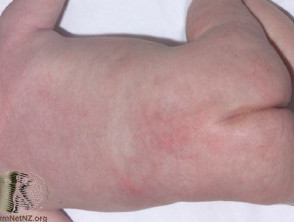

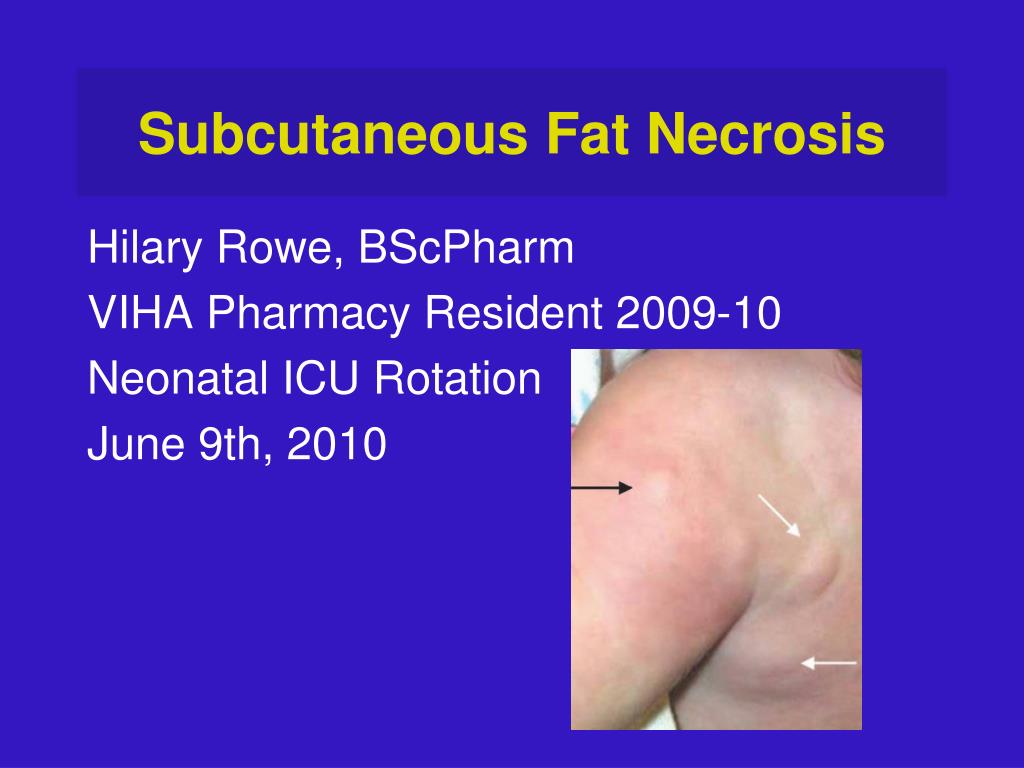
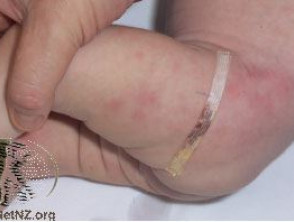
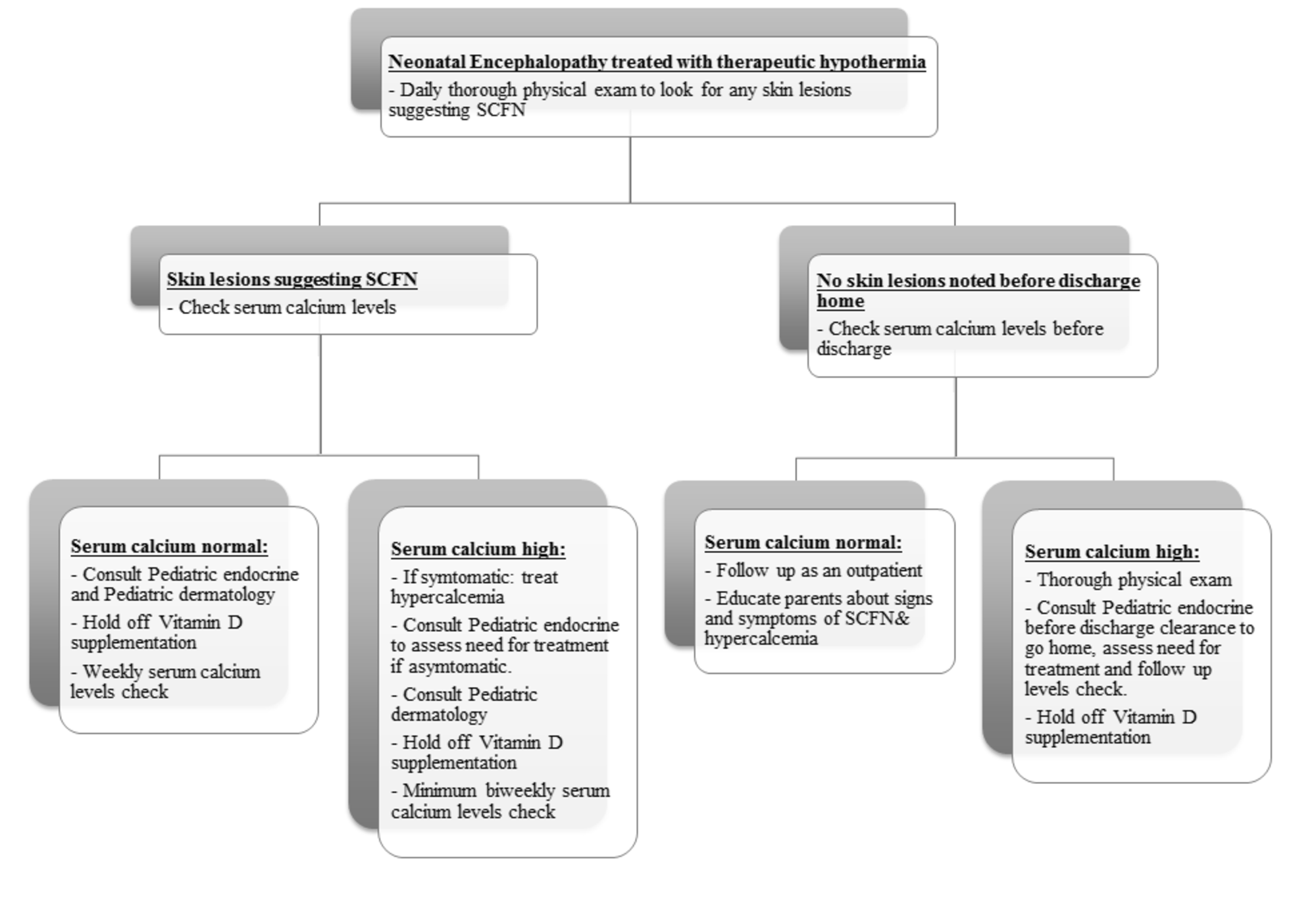
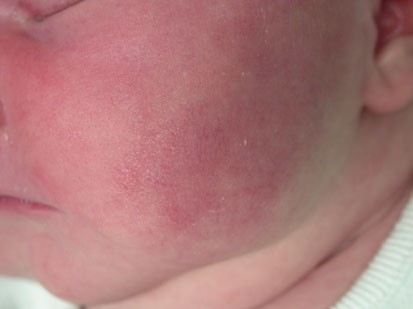



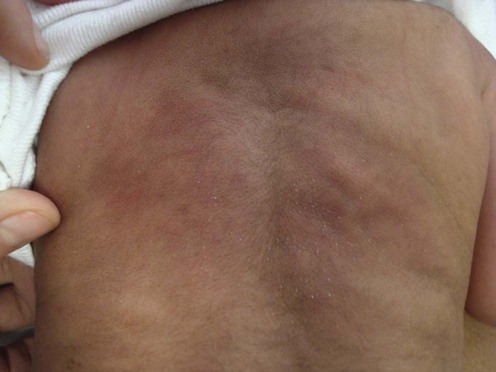










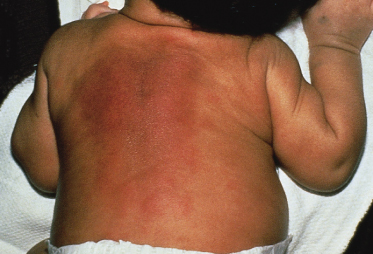

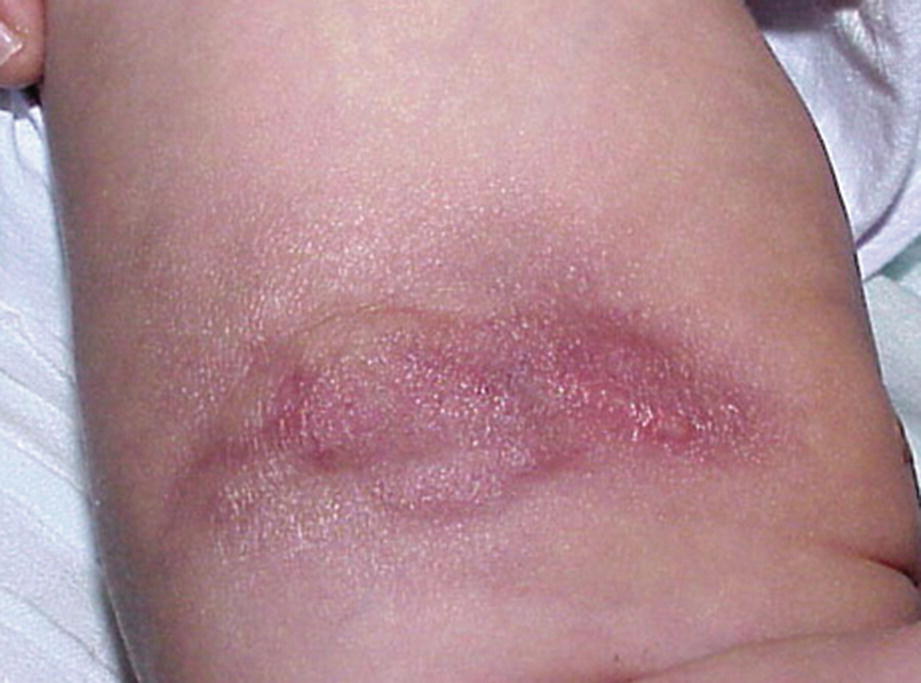


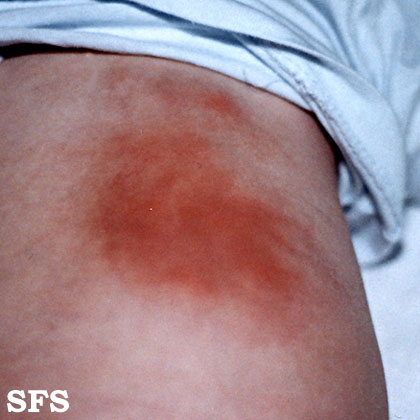
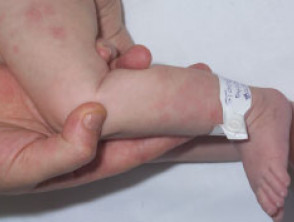




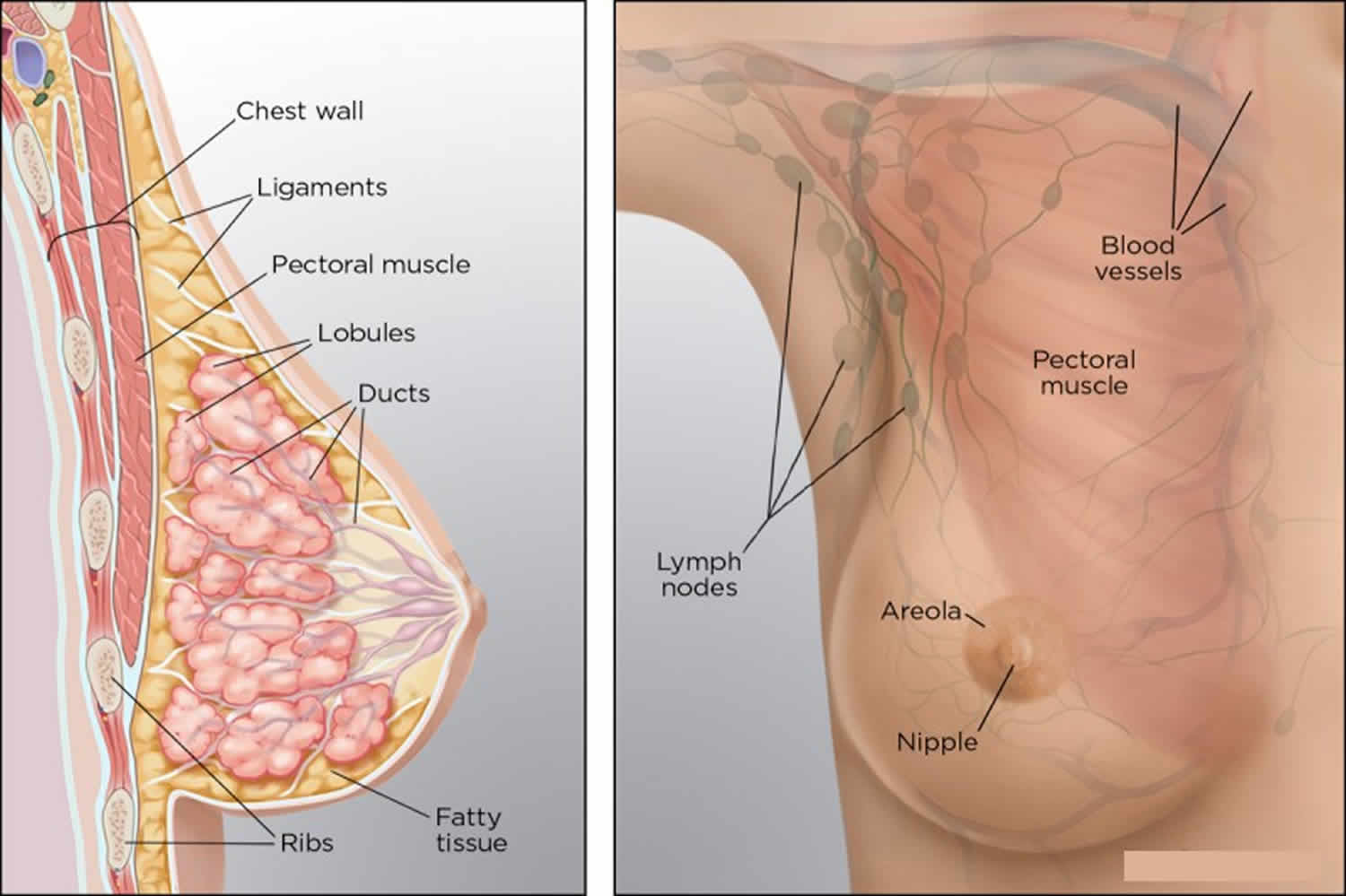


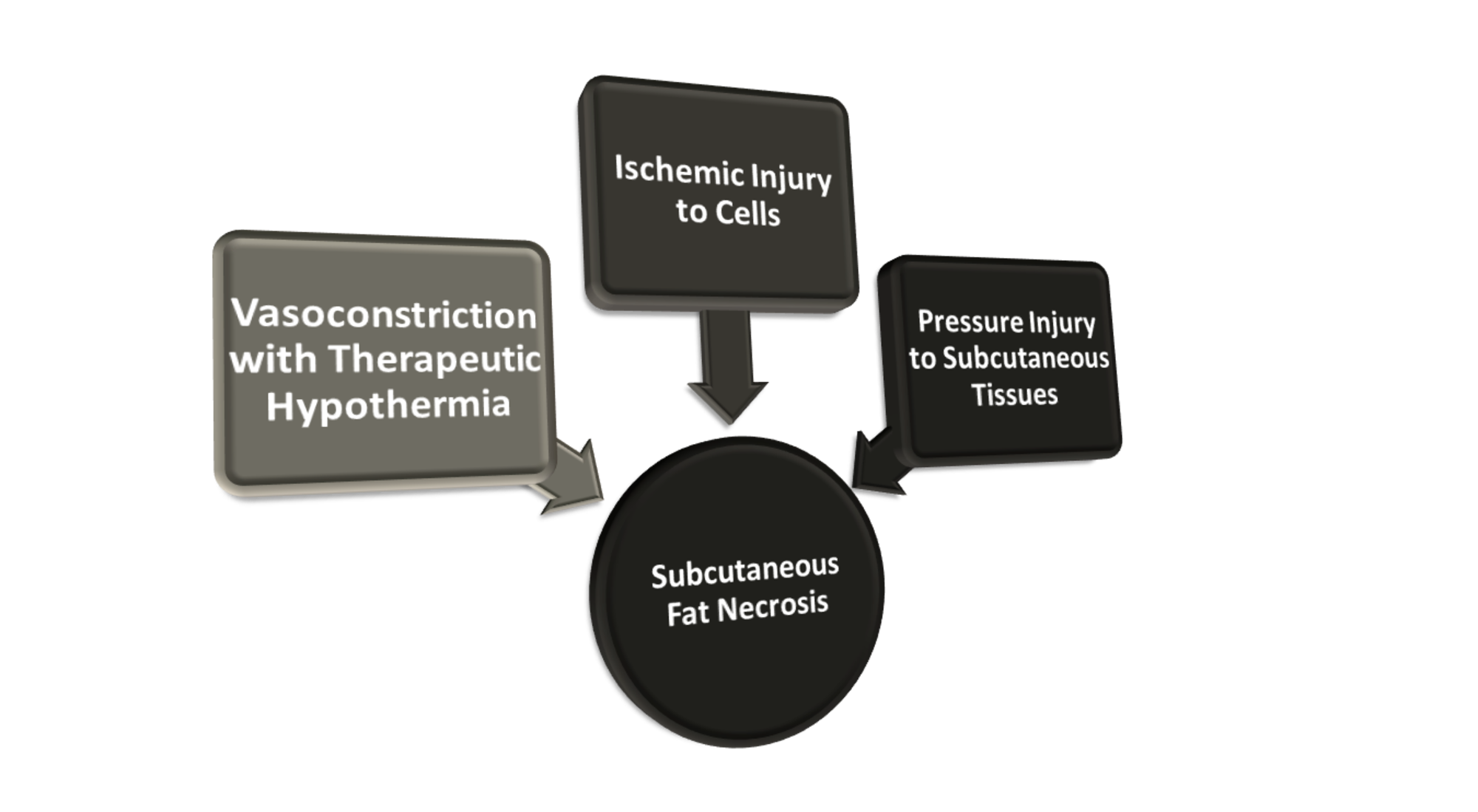
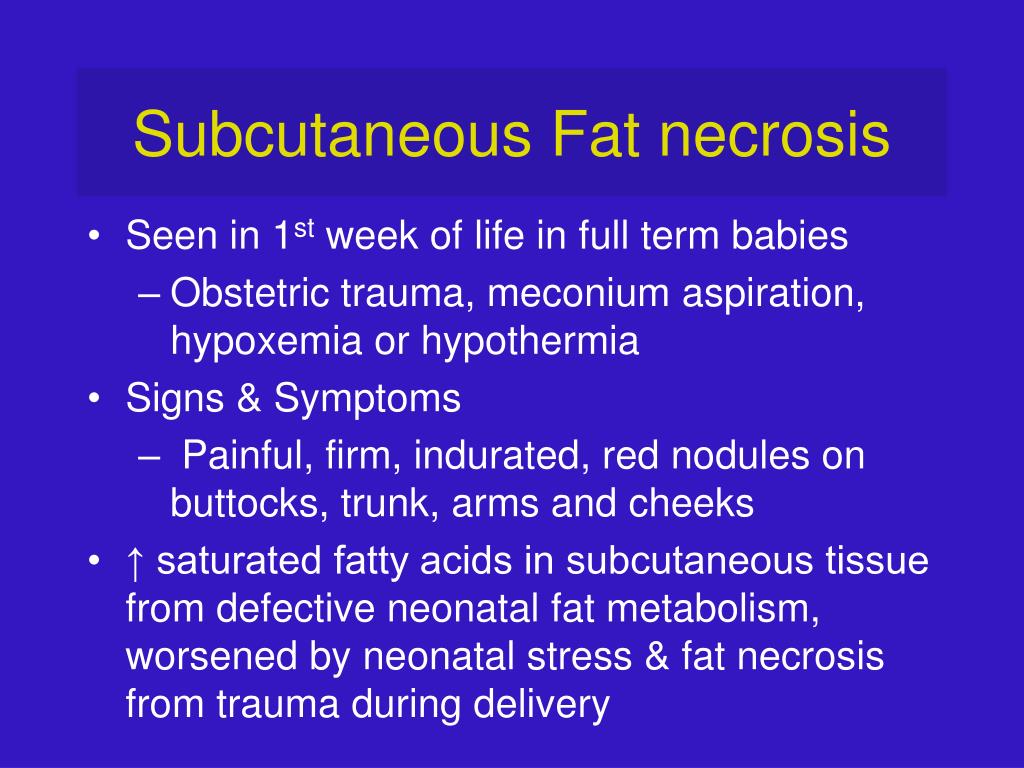
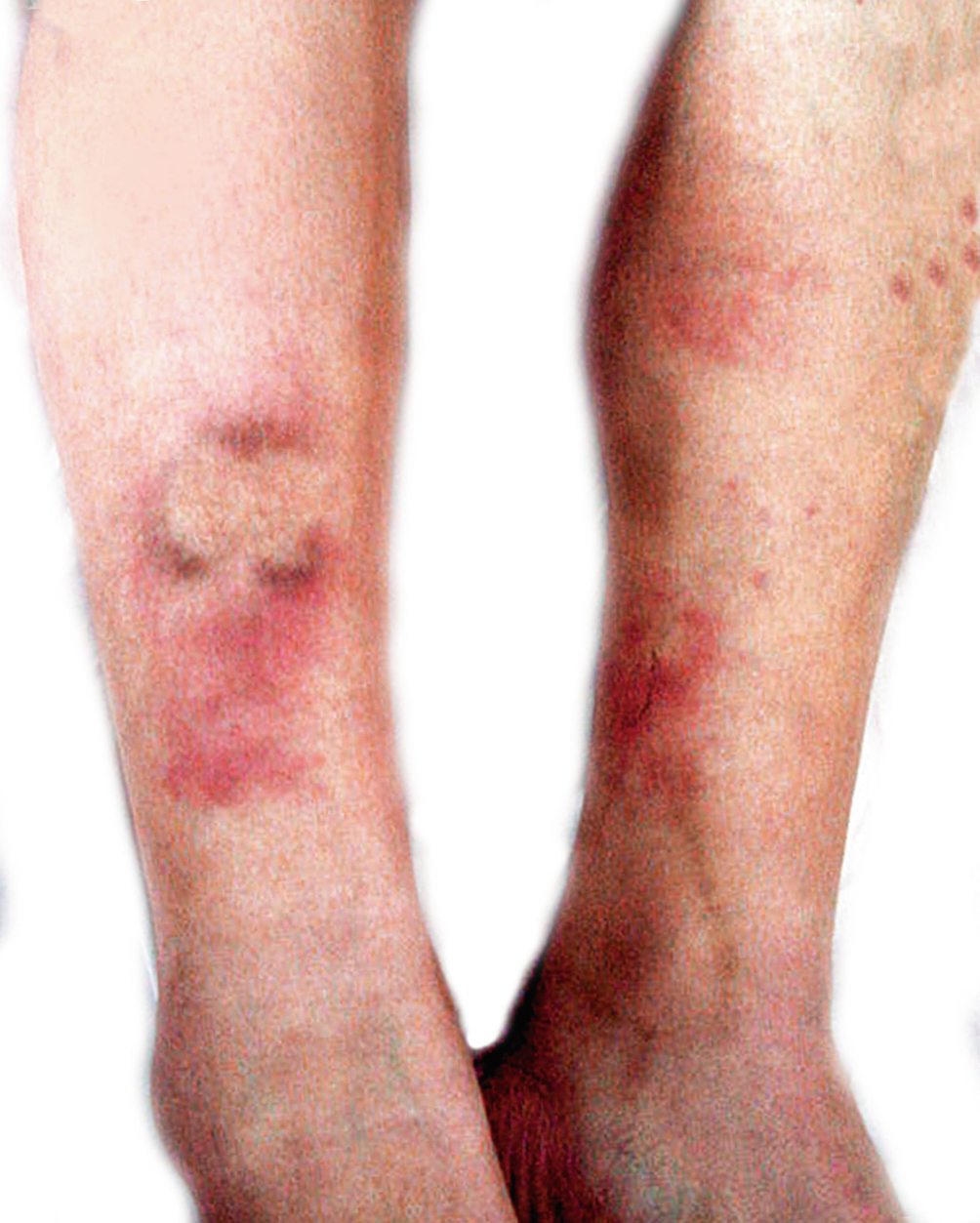
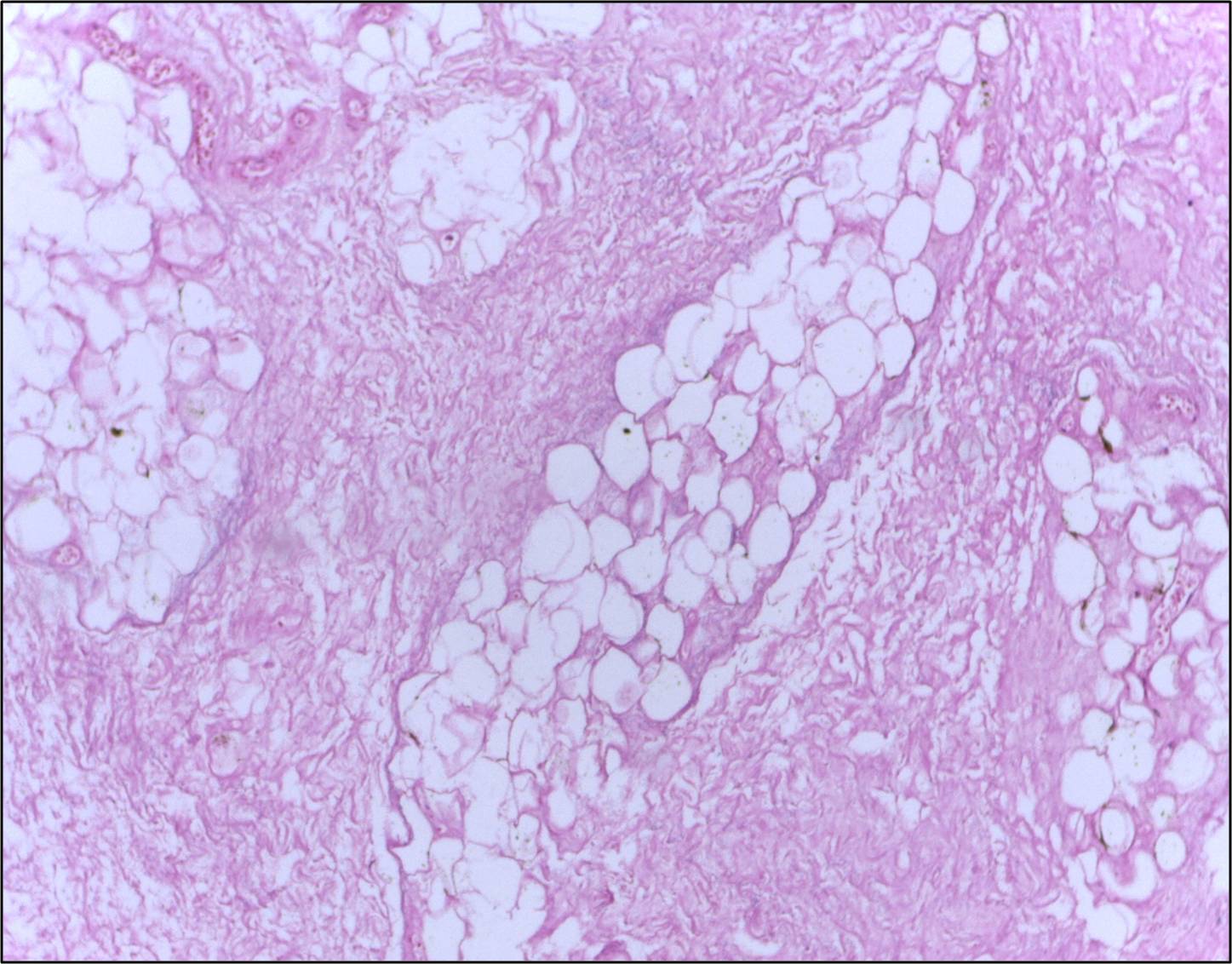

Post a Comment for "Subcutaneous Fat Necrosis Treatment"